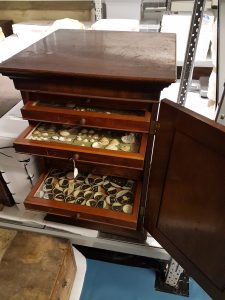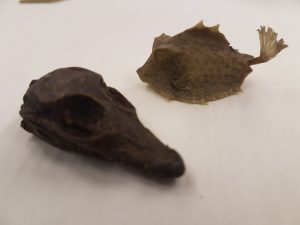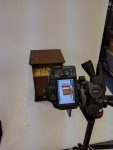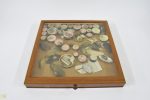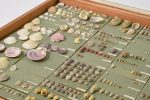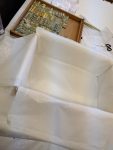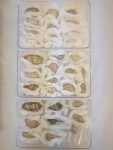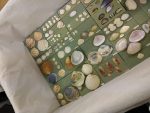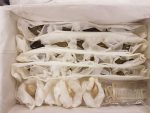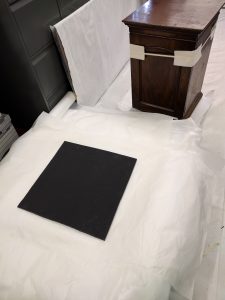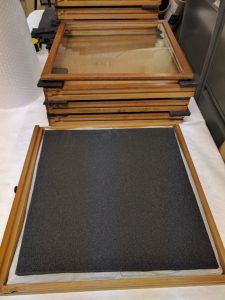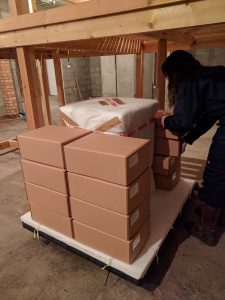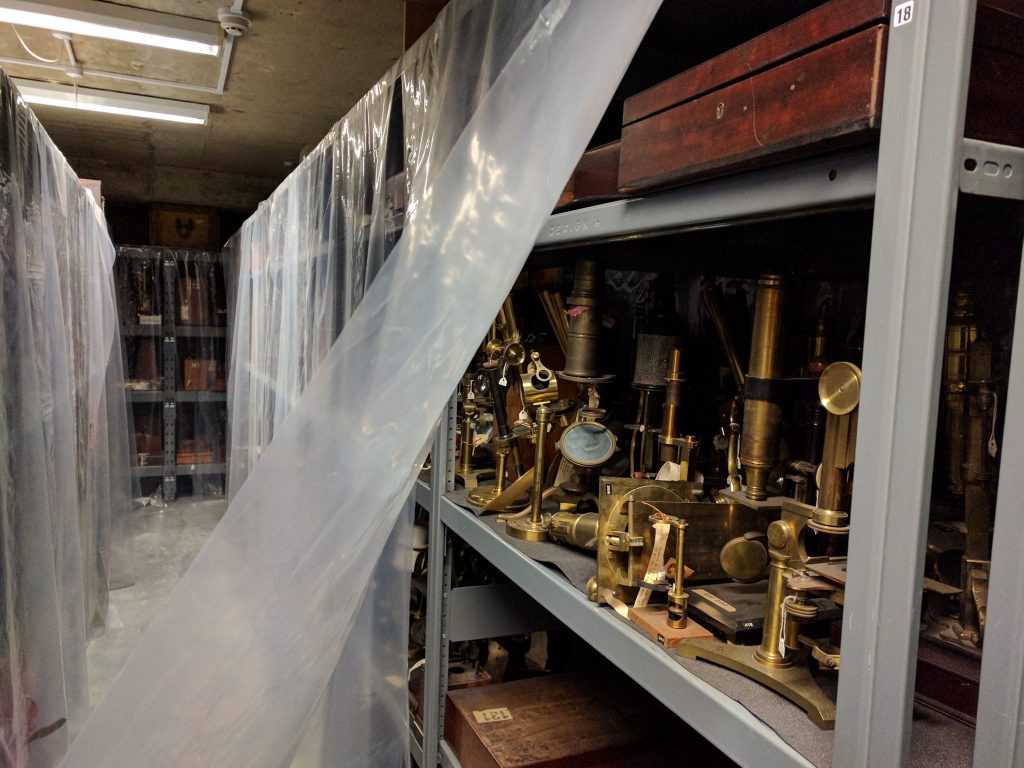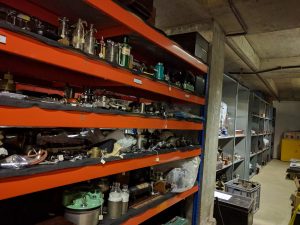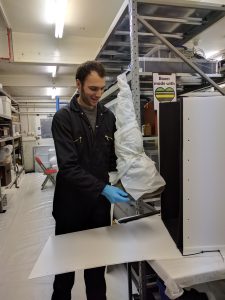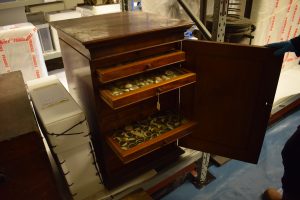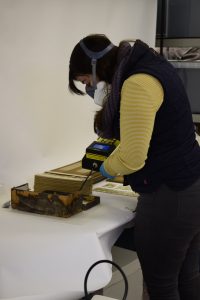Discovering Mercury
Janine Fox, from the Museum’s Move Project Team, explains what do museums do when faced with hazardous material mercury.
**

This is not a post about the little rocky planet, but instead the chemical element and what happens when the MHS Move Project Team discovered the slippery substance at the Museum store. We want to share with you what happened, what we do in this situation and why.
Mercury is a heavy metallic, silvery, liquid element that has been used in the manufacture of items such as barometers, thermometers, valves and fluorescent lamps. Due to the risk of mercury poisoning, mercury has been used less in commercial goods. Mercury poisoning can occur with exposure to the vapour or ingestion of the element. Due to its hazardous nature, items containing or that may have been contaminated by mercury in the Museum collection are clearly labelled and handled with precaution. Whilst auditing items from the Haldane Collection for the MHS Move Project, we discovered some previously undetected mercury. It may have been remnants of a spillage that happened many years ago before the items were gifted to the Museum. The Haldane Collection largely comes from John Scott Haldane’s laboratory.
Rose was preparing microscope slides for photographing when she spotted some small silvery balls, similar to ball bearings in appearance, on the sample holders. After identifying it as mercury, the team put on their face masks with mercury filters to assess the other items in the same box. The team has access to a mercury monitor, which provides a reading of the vapour from the mercury.
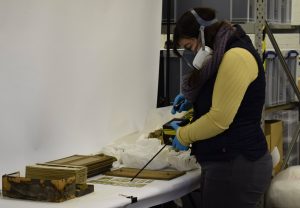 The readings were between 0-5.73 mg/m3, which can be hazardous to health if exposed to the vapour over an hour without personal protective equipment. However with our personal protective equipment we are able to work with these objects to photograph and pack them with little risk to our health. Any amount of mercury in the environment can be hazardous to health and it is our responsibility to collect it and make objects as safe as we can for the future. Mercury should not be touched, brushed or vacuumed. Doing so could break the element up further releasing more hazardous vapour into the air. The Move Project Team has access to a spill kit for small amounts of mercury. The spill kit consists of a small plastic pot with a compartment separated by a perforated plastic divider topped and a sponge. The mercury can be collected off a surface with the sponge and placed over the perforated holes, the mercury drops through and collects in the compartment below. The lid must be placed, but not screwed, back on top.
The readings were between 0-5.73 mg/m3, which can be hazardous to health if exposed to the vapour over an hour without personal protective equipment. However with our personal protective equipment we are able to work with these objects to photograph and pack them with little risk to our health. Any amount of mercury in the environment can be hazardous to health and it is our responsibility to collect it and make objects as safe as we can for the future. Mercury should not be touched, brushed or vacuumed. Doing so could break the element up further releasing more hazardous vapour into the air. The Move Project Team has access to a spill kit for small amounts of mercury. The spill kit consists of a small plastic pot with a compartment separated by a perforated plastic divider topped and a sponge. The mercury can be collected off a surface with the sponge and placed over the perforated holes, the mercury drops through and collects in the compartment below. The lid must be placed, but not screwed, back on top.
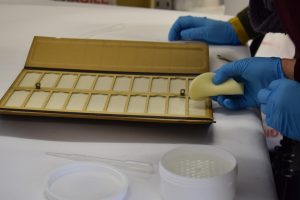
The objects were then cleaned and photographed. All the materials used in the process of handling the contaminated items, such as gloves, brushes, tissue paper, were disposed of in a large bag and clearly labelled with hazard stickers and will be collected by the waste services of the University of Oxford.
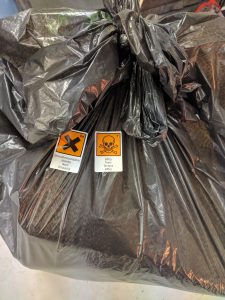
The items were given a final reading, and those that were still contained a mercury reading were packed together and clearly marked. They are now ready to go to the new store!
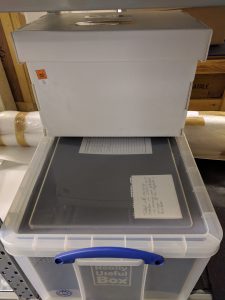
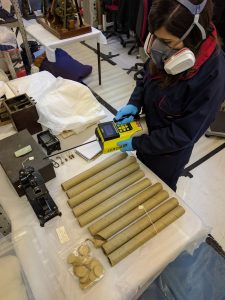
The Museum is undertaking a large project to pack and move its reserve collection. We will continue to post updates of the MHS Move Project on Inside MHS. Follow us to see what we get up to. You can also find us on Instagram and Twitter using #mhsmoveteam and #mhsstores.


